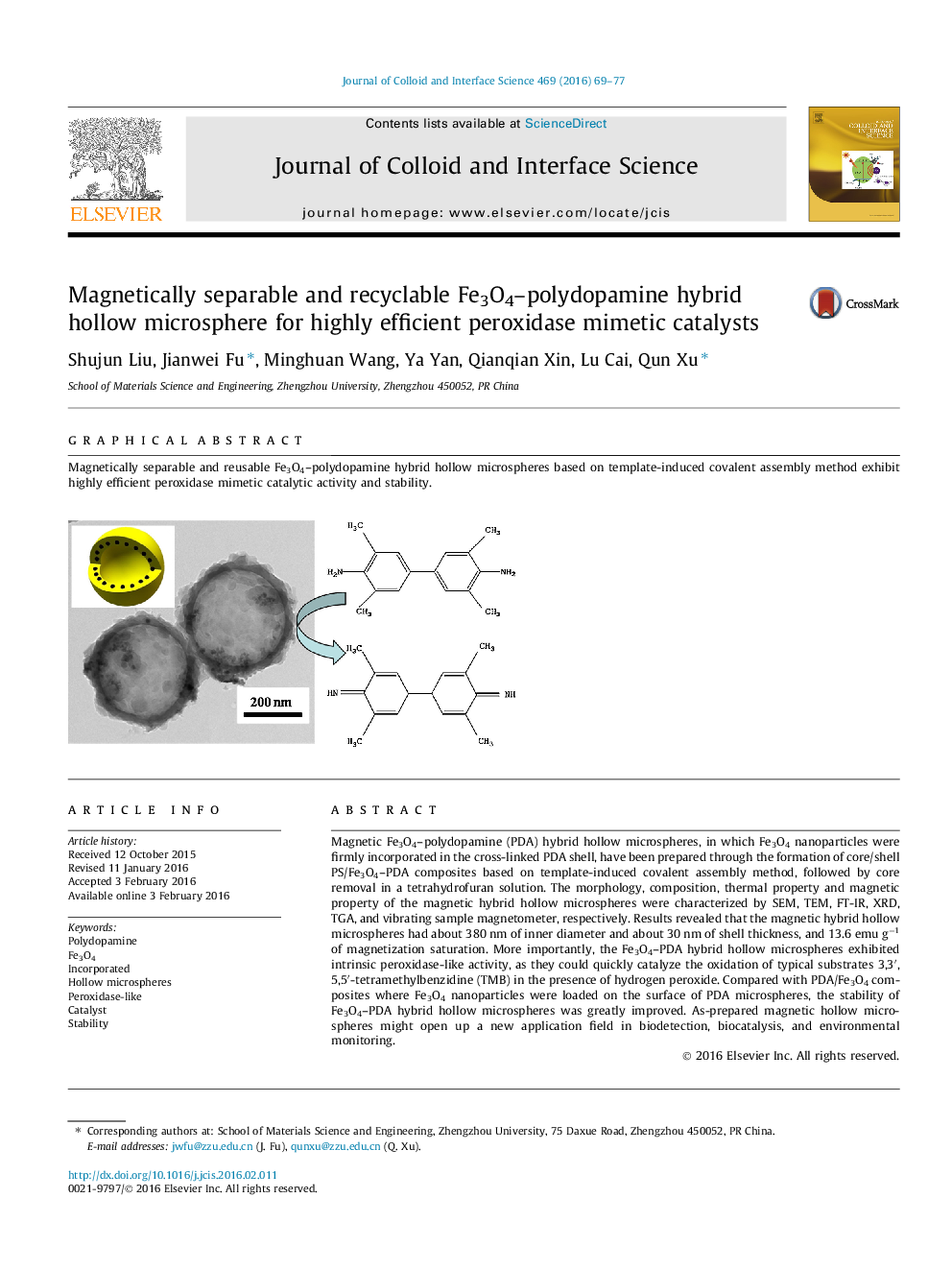| Article ID | Journal | Published Year | Pages | File Type |
|---|---|---|---|---|
| 606530 | Journal of Colloid and Interface Science | 2016 | 9 Pages |
Magnetic Fe3O4–polydopamine (PDA) hybrid hollow microspheres, in which Fe3O4 nanoparticles were firmly incorporated in the cross-linked PDA shell, have been prepared through the formation of core/shell PS/Fe3O4–PDA composites based on template-induced covalent assembly method, followed by core removal in a tetrahydrofuran solution. The morphology, composition, thermal property and magnetic property of the magnetic hybrid hollow microspheres were characterized by SEM, TEM, FT-IR, XRD, TGA, and vibrating sample magnetometer, respectively. Results revealed that the magnetic hybrid hollow microspheres had about 380 nm of inner diameter and about 30 nm of shell thickness, and 13.6 emu g−1 of magnetization saturation. More importantly, the Fe3O4–PDA hybrid hollow microspheres exhibited intrinsic peroxidase-like activity, as they could quickly catalyze the oxidation of typical substrates 3,3′,5,5′-tetramethylbenzidine (TMB) in the presence of hydrogen peroxide. Compared with PDA/Fe3O4 composites where Fe3O4 nanoparticles were loaded on the surface of PDA microspheres, the stability of Fe3O4–PDA hybrid hollow microspheres was greatly improved. As-prepared magnetic hollow microspheres might open up a new application field in biodetection, biocatalysis, and environmental monitoring.
Graphical abstractMagnetically separable and reusable Fe3O4–polydopamine hybrid hollow microspheres based on template-induced covalent assembly method exhibit highly efficient peroxidase mimetic catalytic activity and stability.Figure optionsDownload full-size imageDownload high-quality image (139 K)Download as PowerPoint slide
